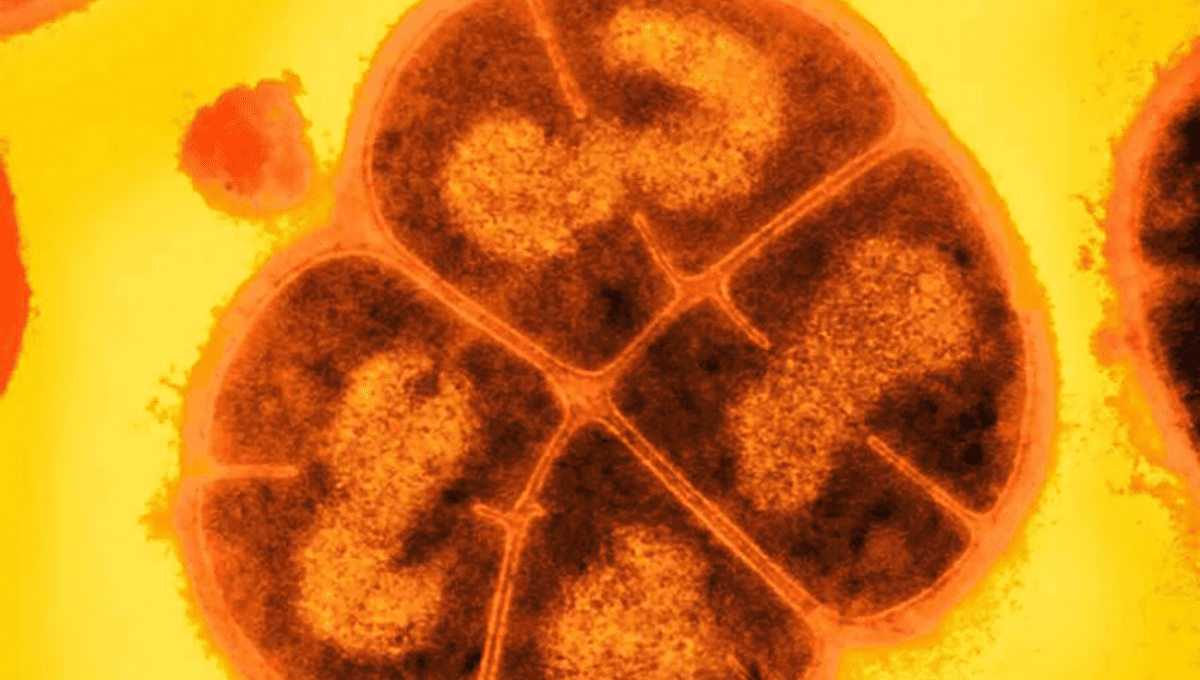
The chance of finding life on Mars has just gone up a bit: Some bacteria can survive cold and dry conditions while being bombarded by radiation for millions of years, researchers have now discovered. The endurance of Earth-native species Deinococcus radiodurans is thanks to its incredible genetics, netting it the world record for “Most radiation-resistant lifeform“. This might have implications for the search for life on Mars – but also keeping Earthly life away from the Red Planet.
Mars is a harsh world. Without a magnetic field and with a thin atmosphere, the surface is constantly bombarded by high-energy particles and ultraviolet rays. This is enough to kill most bacteria from the get-go, but on top of that, the planet is very cold and very dry.
“There is no flowing water or significant water in the Martian atmosphere, so cells and spores would dry out,” senior author Brian Hoffman, from Northwestern University, said in a statement. “It also is known that the surface temperature on Mars is roughly similar to dry ice, so it is indeed deeply frozen.”
Deinococcus radiodurans was discovered in tins of meat in 1956 after it survived doses of radiation normally high enough for sterilization, and has been nicknamed “Conan the Bacterium”. To test its survival capabilities, researchers blasted samples of the microorganisms with gamma radiation and protons. Under Mars conditions, where the bacteria are dried, frozen, and buried deeply, D. radiodurans can withstand 140,000 grays of radiation. That’s a dose 28,000 higher than what would kill the average human.
It is better at surviving that Bacillus spores – and those have been seen lasting millions of years. On the surface of Mars, Conan would die in a matter of hours. However, just 10 centimeters (3.9 inches) below would push the survivability to 1.5 million years. Buried 10 meters (32 feet) deep, and researchers estimate 280 million years of survival.
“Although D. radiodurans buried in the Martian subsurface could not survive dormant for the estimated 2 to 2.5 billion years since flowing water disappeared on Mars, such Martian environments are regularly altered and melted by meteorite impacts,” added Michael Daly, a professor of pathology at Uniformed Services University of the Health Sciences (USU) and member of the National Academies’ Committee on Planetary Protection.
“We suggest that periodic melting could allow intermittent repopulation and dispersal. Also, if Martian life ever existed, even if viable lifeforms are not now present on Mars, their macromolecules and viruses would survive much, much longer. That strengthens the probability that, if life ever evolved on Mars, this will be revealed in future missions.”
Future missions might explore the underground of Mars directly, and might even find biological evidence in case some sturdy life forms evolved there. At the same time, the study raises the warning that we could easily contaminate Mars with Earthly life.
The work is published in the journal Astrobiology.
Source Link: Mars' Subsurface Could Be Perfect For Bacteria Taking A Long Nap